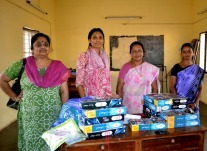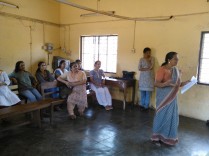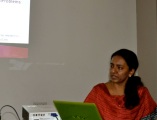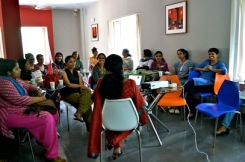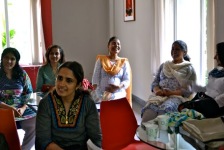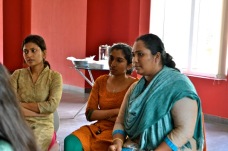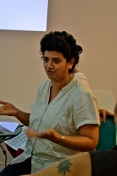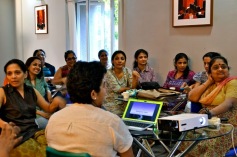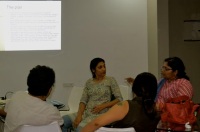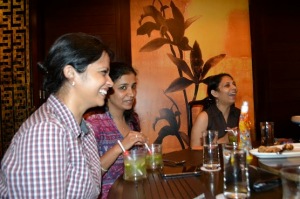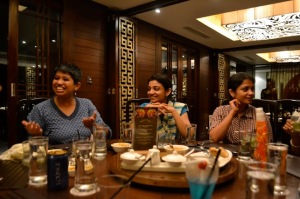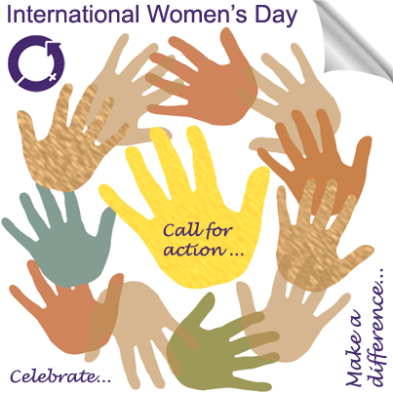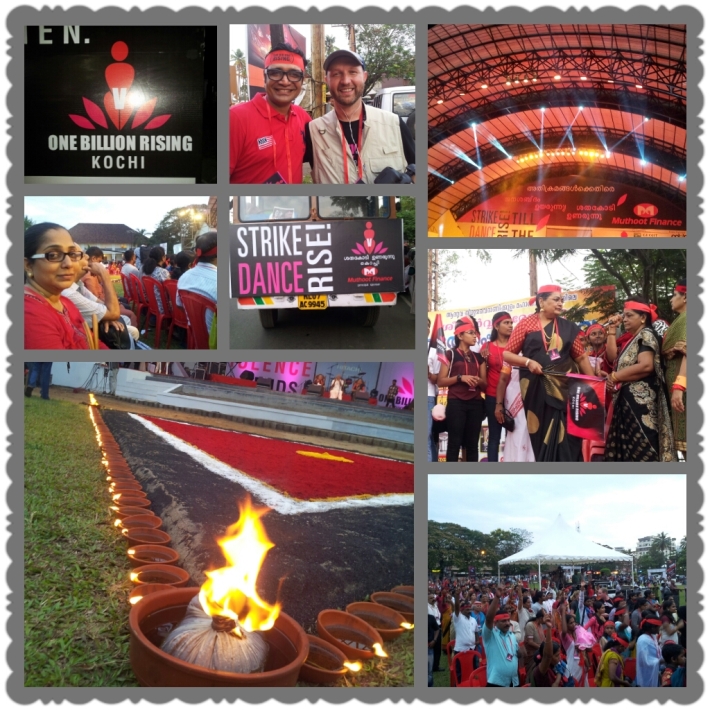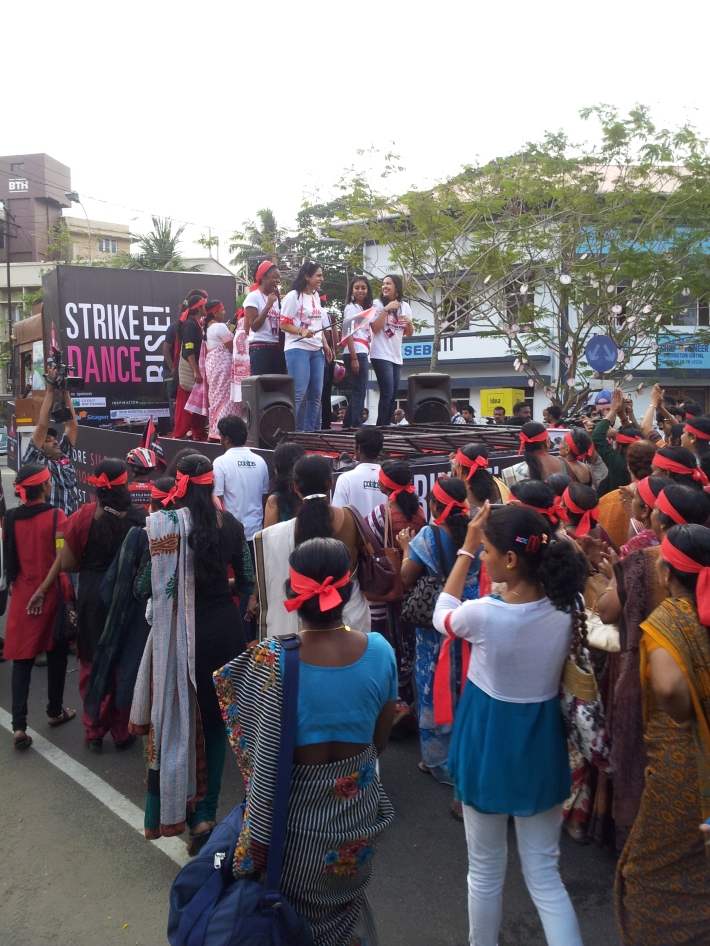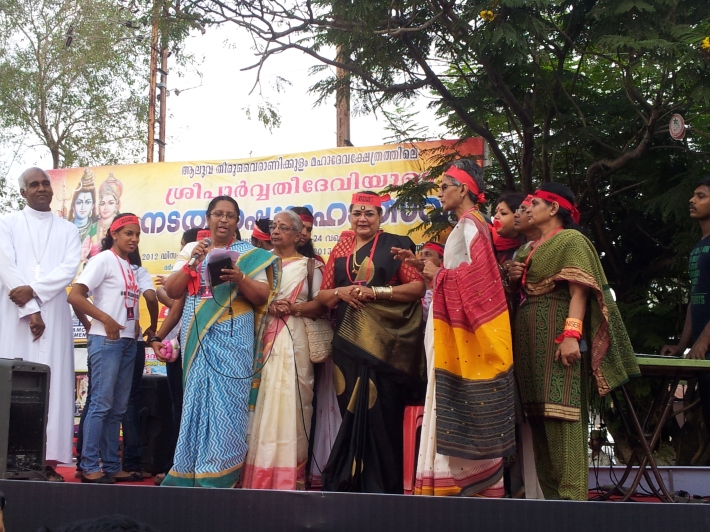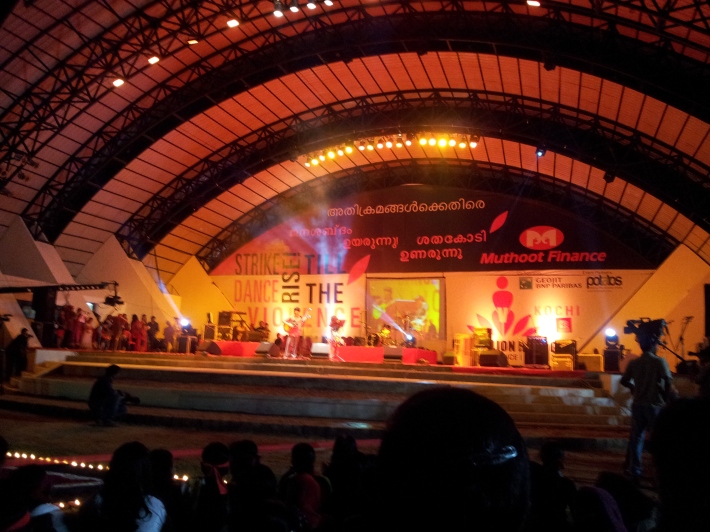Small feet which are capable of running away, saving themselves. Small mouths which can say ‘No’ – the all powerful word. Small bodies which can demand ownership. Small minds which can live without fear.
And the dirty hands. Which are everywhere. Sometimes the father, the brother, the next door uncle, the trusted home servant, the driver, the gardener.
As a parent, the bodily integrity of my child is a difficult lesson to impart. I want to tell my daughter not to be afraid. I want to tell her to boldly go where I haven’t been able to. I want her to experience all that is life. But I also want to be able to tell her that her body is her own. She has a right to say ‘NO’ – anytime. And she has a right to know that she is always ONLY the victim. Never to blame.
As a social worker in the field of Gender Violence, working with victims of abuse, especially children, I face the other side everyday. Child women battered to the point of extinction, their self value crushed and annihilated, their childhood snatched away, in packages of years, reducing them to non humans, non people, with years lost even as they grapple with rescue and rehabilitation.
Our NGO, Raising Our Voices Foundation (ROV), works in partnership with the Government of Kerala to holistically mentor the state’s wards residing in their Home in Ernakulam – the biggest Girls’ Home of the state. Though the children are from all backgrounds – orphans, street children, children from dysfunctional families, the biggest section is still victims of abuse.
They are children with histories of abuse starting with their next of kins – fathers, brothers, uncles. They are children who had been absorbed in prostitution rings. They are victims rescued from established sex trafficking rings.
We find that working with these children involve several issues.
Firstly of course is combating their mental ghosts. Having had to negotiate their space within the small cracks available for their survival during the abuse process, most children develop great levels of self deception skills, which manifest into lying, changing their stories and also constantly trying to manipulate the system and social workers engaging with them. Many host massive levels of anger and behaviour disorder, levels of aggression, and abusive behaviour expressed to the figures of authorities around them, their peers and especially the children younger to them, creating unending cycles of abuse and victimisation.
The process of institutionalisation itself is not easy, many of them having to deal with several academic year losses. Many nurse severe forms of Learning Disabilities (LD), and all children have a common strain of almost irreversible educational backwardness. To give back their childhood, it becomes imperative to reinstate them in schools or academic life, a must for any child and a fundamental right in our country. Yet this process of academic rehabilitation is fraught with challenges, not just because of the factor of weak basics and ability to cope with the mainstream state delivered academic process, but also because of the high rate of school dropout issue we face. The reasons are manifold, from simple unease of engaging in a disciplined curriculum system, to more severe issues of the stigma and harassment our girls face because they come from the ‘Home’. Many of them need constant additional support and repeated counselling to continue their engagement with the education process.
This support has to be inserted sensitively. Many need one to one classes to just cope with the basic syllabus of studies that they face in the state curriculum. Having lost years, they combat severe educational backwardness and the simple ability to study systematically. An unempathetic public school system does not ease the burden where the child is often one in a class of fifty, with an overworked, over stretched teacher trying to impart education to a class of uninterested pupils. Supportive maintenance tuitions and an enabling study atmosphere, both missing today from most public systems become the need of the day. Compounded with that is the urgent need to build libraries in any of these Homes, to create veritable compendiums of knowledge which are accessible and easy to reach for children of these backgrounds. We are constantly dealing with demands for books, school guides, question banks, reference books and story books.
Even with the best intentions, about 20% of the children still remain outside the purview of traditional schooling due to various reasons, the easiest being an inability to cope mentally with the pressures of a public school system. Child abuse victims, especially those rescued from trafficking, are often complainants and victims in long standing criminal cases, which create an added security issue for children to travel to schools. Further, there are high risk children, with flight and self harm risks, as well as children combating debilitating psychological and physical health issues.
For them, the school needs to come to them. A complete system of state syllabus trained teachers with special ability to deal with educational backwardness or LD is required to fill this gap, to literally run a parallel school system within the Home. We have achieved this by constituting an NIOS learning centre within the Home premise where regular classes in three batches are conducted for the children who have to stay back at ‘Home’.
The medical side is a whole different deal. While the mental ghosts I talked about need to be dealt with first, constant counselling and advanced psychological and psychiatric support is required to support these children’s fragile mental state. Children rescued from long term abuse exhibit strong symptoms of paranoia, anger, utter dejection and suicidal ideation, other than cases of severe stress and depression, resulting into chronic physiological health conditions. A tired government system is often unable to provide the level of fine-tuned empathetic individual mental care that these children need.
A many level mental support system needs to be constructed for adequate support to these fragile beings. Starting at basic counselling and psychosocial support, it needs to elevate into professional psychological interventions, and subsequently for psychiatric and neurological interventions with complete treatment plans. We are now looking at options of a collaborative psychiatric and neurological approach for many of our most fragile wards.
Along with this, many children suffer from classic conditions prevalent in young people with high levels of sexual activity much of which is abusive. High needs of continued sexual stimulation, or frigidity, ideation of the abuser or the rescuer, as well as sexually abusive behaviour towards the weaker wards in the group are common. Institutionalisation in the prescribed sexually segregated manner, while imperative for protection of the girls, also lead to drastic behaviour to court attention from the opposite sex, or manifestations like forced lesbianism.
The physiological support required also is at many levels. While regular health checkups, immunisation, blood grouping and anaemia checks is a must, it needs to be followed up with further evaluations and consult in critical areas like gynaecology, dermatology and neurology. Like all children, the wards need ophthalmological and dental care. But acute among them are many gynaecology related complications, especially related to disorders typical of this victim group with early onset of sexual activity. Dealing with sexually transmitted diseases become a critical need.
The successful rehabilitation process for children has to be trifold:
It needs to first embrace a process of mental and physical healing, nurture and care for these adolescent or prepubescent girls. Secondly it needs to educate and train these children to enable themselves as independent adult individual for re-entry into society. And lastly but by no means the least, it needs to secure justice not just legally but at the social and human level for these victims of the worst crimes of civilisation and enable them to re enter normal life with a sense of confidence and self respect, sans fear.
The legal redress system in all its abilities still remain a far cry from treating these children as human beings with individual rights. The law and the police at its most effective base, still view the victims as components to ensure justice in its narrowest terms, forgetting that they are children requiring empathetic interventions which allow them to continue with their life uninterrupted. Very often, in the name of protection and security, it is the victims who are incarcerated for years while the perpetrators walk free living normal lives. The process of complete rehabilitation and re-entry of these victims to normal lives are difficult while the perpetrators are at large posing threats to their safety and security. We find again and again, children having to be restored back home, where the perpetrator of the crime often resides within the walls or just next door. We find victims asking us about their lost lives, their lost innocence, childhood.
The transfer of children of this category into the adult system by the age of 18, itself is another fraught with dangers for these fragile beings. Though 18 is an age by which we consider children to be adults, most children remain under the protection of their parents till a good age of 21 or more to establish comfortable entry to adult life. These children are even further in need of such recognition and protected treatment. The law decries them as adults and swiftly shifts them to the adult welfare schemes which remain hugely inadequate to deal with such victims who remain as children even more than other children, due to loss of academic years and stunted mental growth. The scamper we face to place such children to enabled adult environment by the time they are 18, to save them from being transferred to adult welfare schemes is often drastic and panic ridden.
These children need a further support of at least 5 more years beyond their legal adult age within the Child Protection Act, to be enabled as adults. They need speedy and empathetic legal redress systems, with legal counsellors working with them as clients, rather than victims, which protect and safeguard their legal and human rights. Moreover, they need to be empowered to make critical decisions about themselves by themselves, so that they become effective adults. Most of them have many hidden talents, great strengths of character, and immense potential to become transformative figures in their later lives. However, the system does not enable every potential. It enables the exceptional only, who shines despite all odds. It is imperative that the systems for these children enable each and every child to re enter normal life as quickly and as empowered as possible.
The last factor in rehabilitating these children through the public welfare delivery mechanism is the shoddy conditions of the built environment structures which house government social welfare schemes. A healthy surround houses a healthy mind. Today most infrastructure building exercises in the government are through the public works department, an archaic body with opaque systems and speeds of a behemoth. It thus generates institutional structures completely disconnected with the real needs of these child victims, who need a home, a therapeutic environment and a healing atmosphere. The world over, standards of design and building for care homes have changed drastically to become contextual to the needs of the users. But in India, this delivery is still through standard building processes allowing no flexibility to create environments which are therapeutic for these victims. Even inserting a lift, or changing the colour of the building from its standard institutional colour, become processes of great committees and meetings.
There is an urgent need for the government then to recognise that to deliver critical welfare to these children, the built environment of the ‘Homes’ need to be specialised to match the needs of the wards and standards be executed based on these needs rather than archaic building specifications standardised for all government buildings. They also need to understand the need to employ planning/ design professionals and architects who are capable of delivering empathetic environments to such infrastructure.
These children are the victims of some of the worst crimes of our society. We as a society put a wall around them and forget about them. Privacy issues and safety concerns give a further brush of anonymity to these children, thus making them ’non peoples’ in our civilisation, operating and living in the cracks of our society. It is time that we face up to our responsibilities to our young and work together in bringing these children back to our life, our society and re establish them with respect and dignity.
